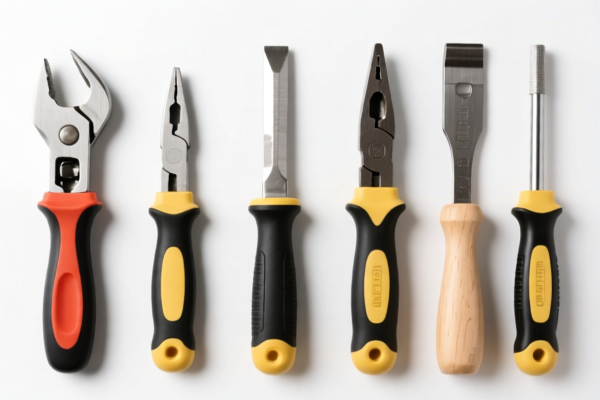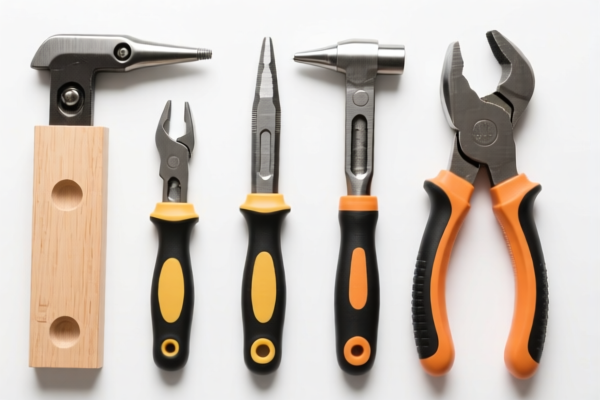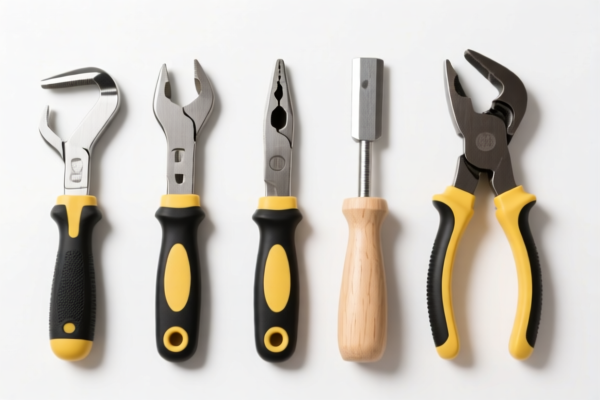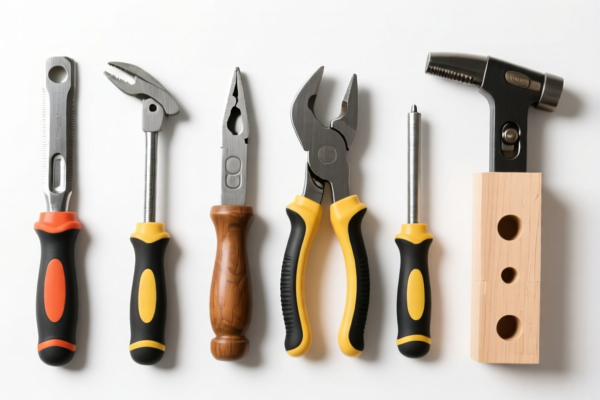| HS Code | Official Doc | Tariff Rate | Origin | Destination | Effective Date |
|---|---|---|---|---|---|
| 8205100000 | Doc | 61.2% | CN | US | 2025-05-12 |
| 8205593080 | Doc | 55.0% | CN | US | 2025-05-12 |
| 8207502070 | Doc | 60.0% | CN | US | 2025-05-12 |
| 8207903080 | Doc | 60.0% | CN | US | 2025-05-12 |




Woodworking Drill Tool
A woodworking drill tool is a device used to create holes in wood. These tools utilize rotary motion to bore cylindrical apertures, and are fundamental to a wide range of woodworking tasks, from basic joinery to intricate detail work.
Materials
Woodworking drill tools are constructed from a variety of materials, chosen for their strength, durability, and ability to maintain a sharp cutting edge. Common materials include:
- High-Speed Steel (HSS): A common and relatively inexpensive material for drill bits, suitable for general-purpose drilling in softer woods.
- Carbon Steel: Often used for larger bits and augers, offering good strength but requiring more frequent sharpening.
- Titanium Nitride (TiN): A coating applied to HSS bits to increase hardness, wear resistance, and cutting speed.
- Cobalt: Added to HSS to improve heat resistance and performance when drilling harder woods.
- Carbide: Used for premium drill bits, offering exceptional hardness, wear resistance, and longevity, particularly in demanding applications.
- Tool Steel (for drill bodies/chucks): Used for the body of the drill itself, providing strength and stability.
Purpose
The primary purpose of a woodworking drill tool is to create holes. However, the specific applications are diverse:
- Joinery: Drilling pilot holes for screws, dowels, or mortise and tenon joints.
- Fastening: Creating holes for screws, bolts, or other fasteners.
- Routing/Shaping: Used in conjunction with specialized bits to create decorative edges, grooves, or patterns.
- Boring: Creating larger diameter holes for structural elements or decorative features.
- Pocket Hole Drilling: Creating angled holes for concealed joinery.
Function
Woodworking drills function by:
- Rotation: A motor or manual force spins a drill bit at a high speed.
- Cutting Action: The rotating bit contacts the wood, removing material through shearing and chip formation. The flutes of the bit channel wood chips away from the cutting edge.
- Feed Rate: Controlled pressure is applied to the drill to advance the bit through the wood.
- Chip Evacuation: Flutes within the drill bit carry wood chips away from the cutting area, preventing overheating and ensuring efficient drilling.
Usage Scenarios
- Benchtop Drill Press: Provides stable, accurate drilling for a variety of tasks.
- Handheld Drill: Offers portability and versatility for on-site work or smaller projects. Can be corded or cordless.
- Floor-Standing Drill Press: Used for large-scale drilling or repetitive tasks.
- Specialized Drilling: Using drill presses with specialized jigs and fixtures for angled drilling, dowel insertion, or mortise and tenon work.
Common Types
- Twist Drill Bits: The most common type, suitable for general-purpose drilling. Available in a wide range of sizes and materials.
- Brad Point Bits: Designed for clean, precise holes in wood, minimizing tear-out. Feature a sharp point and spurs to guide the bit.
- Spade Bits: Used for drilling large diameter holes quickly, but may produce rougher edges.
- Forstner Bits: Create flat-bottomed holes with clean edges, ideal for mortises or decorative features.
- Auger Bits: Used for drilling deep, large diameter holes, often used in timber framing.
- Hole Saws: Used to create large diameter holes, often for pipes or wiring.
- Self-Feed Bits: Have a screw-like tip that pulls the bit into the wood, useful for drilling deep holes.
- Pocket Hole Bits: Designed with specific angles and depth stops for creating pocket holes.
- Dowel Bits: Used for creating precise holes for dowel joinery.
Woodworking drill tools can be categorized based on their function as interchangeable tools for handtools or machine-tools used for drilling. These tools are specifically designed for woodworking applications.
The following HS codes are relevant based on the provided information:
-
8207502070: Interchangeable tools for handtools, whether or not power operated, or for machine-tools; base metal parts thereof: Tools for drilling, other than for rock drilling, and parts thereof: With cutting part containing by weight over 0.2 percent of chromium, molybdenum, or tungsten or over 0.1 percent of vanadium. This code applies to woodworking drill tools where the cutting part composition includes over 0.2% chromium, molybdenum, or tungsten, or over 0.1% vanadium.
- 82: Blades and tools for cutting, grinding, polishing, shaping, etc. of metal, stone, or other materials.
- 07: Interchangeable tools for handtools, whether or not power operated, or for machine-tools.
- 50: Tools for drilling, other than for rock drilling, and parts thereof.
- 20: With cutting part containing by weight over 0.2 percent of chromium, molybdenum, or tungsten or over 0.1 percent of vanadium.
- 70: For woodworking.
-
8207903080: Interchangeable tools for handtools, whether or not power operated, or for machine-tools; base metal parts thereof: Other interchangeable tools, and parts thereof: Other: Cutting tools with cutting part containing by weight over 0.2 percent of chromium, molybdenum, or tungsten or over 0.1 percent of vanadium. This code applies to woodworking drill tools that are not specifically categorized under 8207502070, but still contain over 0.2% chromium, molybdenum, or tungsten, or over 0.1% vanadium in their cutting part.
- 82: Blades and tools for cutting, grinding, polishing, shaping, etc. of metal, stone, or other materials.
- 07: Interchangeable tools for handtools, whether or not power operated, or for machine-tools.
- 90: Other interchangeable tools, and parts thereof.
- 30: Other.
- 80: Cutting tools with cutting part containing by weight over 0.2 percent of chromium, molybdenum, or tungsten or over 0.1 percent of vanadium.
According to the provided reference material, the HS code options related to 'woodworking drill tool' are limited, with only the following 2 found. It is important to verify the composition of the cutting part to determine whether it contains over 0.2% chromium, molybdenum, or tungsten, or over 0.1% vanadium to select the correct HS code.
Customer Reviews
No reviews yet.